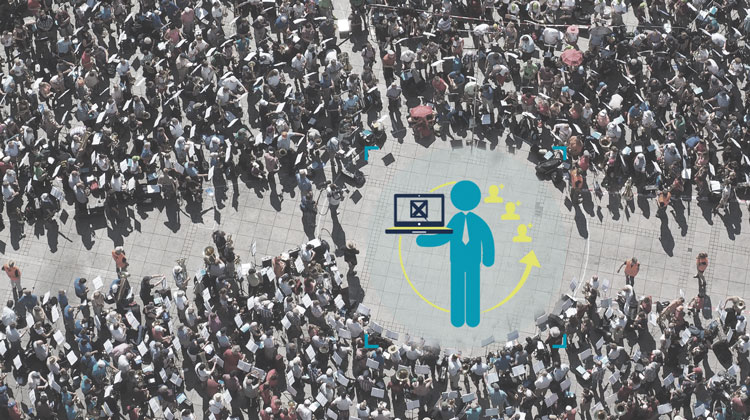
During the Bundestag election in 2013 it became clear that the imbalance in voter participation is growing. According to the study “Divided Democracy – Political Participation and Democratic Satisfaction before the Bundestag Election 2013” from the Bertelsmann Stiftung, the election results were “no longer socially representative”[1].
It became apparent that the basis of this imbalance can primarily be attributed to the social gap among the voters. To put it bluntly: Well-off portions of the population went to vote, and those with a weaker social position did not. The fact that entire social milieus behaved similarly mainly has to do with “belonging”, as do many other causes examined.
“Man is by nature a social animal.”
– Aristotle, Greek philosopher –
Why vote if you don’t belong?
Why should somebody partake in an election if they feel like an outsider who doesn’t have a role to play in what’s going on during or following a vote? The reason is difficult to see for such people. And those who do not feel addressed or approached will not become active.
A key to higher voter participation can also create a foundation from which a sense of belonging will grow. This appears to have gone less smoothly during the last Bundestag election, at least.
But how do you create a sense of belonging?
You may open up the door to voting, but voter participation can only happen through self-determination. This means that a need must be created. One goal should be to make the voters feel like they want to belong. This also works best through careful communication.
For one – as already discussed in the previous tips to increase voter participation – this may occur through the personal approach and the functional approach to the voter. Yet there are more communicative tricks for conjuring up the need to partake in the vote:
- Convey the message that “everybody votes”. People follow group dynamics, and nobody wants to be the only person not participating.
- Communicate beforehand that there will be greater voter participation than usual. This also incorporates the aforementioned group dynamic.
- Once the vote has commenced, announce the number of people who have already voted in regular increments. Such live statistics increase the need to take part in the vote.
- Explain to very voter that a whole is always made up of many individuals, and that every gear in the engine, as small as it is, can help determine the direction it will go in. The feeling of being part of something greater also increases the tendency to participate.
While communicating before and during an election, every word should be carefully weighed. Thoroughly assess your wording to see if you may unintentionally be communicating with one voter group more strongly, or if you are leaving one out.
The desire to feel like one belongs is deeply engrained in people. This is usually a subconscious process, but it has a great influence. For this reason you should try addressing all voters with the same emphasis. Different perspectives from different people could be very helpful when striking up communication.
[1] http://www.wahlbeteiligung2013.de/fileadmin/Inhalte/Studien/Wahlbeteiligung-2013-Studie.pdf